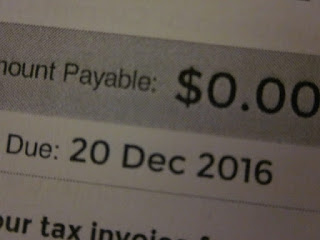The last time I blogged about Sabana REIT was in February this year.
I suggested that we might want to view some assertions in cyberspace that Sabana REIT offered great value for money because of its relatively high yield and rather big discount to NAV with a dose of scepticism.
What I was most concerned about was the matter of expiring master leases, 11 in all.
Source: Press Release.
What is the occupancy of 23 Serangoon North Ave 5? I very much doubt that it is 100%. DPU is already lower in Q3 and it is likely to take another hit in Q4 as property income reduces and operational cost goes up because of this development.
Also, the language lacks transparency. When we hear "final stage of negotiations", we get the impression that negotiations are likely to be successful.
However, realistically, we should be prepared that more properties would be converted from having a master lease to being multi tenanted.
A lack of transparency makes it difficult for anyone to estimate what is truly a fair price to pay for Sabana REIT. Annualising Q3's DPU of 1.77c is a mistake but let's do it anyway. 7.08c. With a unit price of 78c, we are looking at a 9.07% distribution yield.
If Mr. Market is willing to pay 78c a unit, my interpretation is that Mr. Market is probably expecting quarterly DPU to decline to 1.56c or a 12% decline from 1.77c in due course. This would give an eventual 8% yield at 78c a unit.
Now, is Mr. Market right?
Well, we know the saying that Mr. Market is always right but if the DPU should decline by much more, what then?
We should be able to make a more accurate guess by end of the year and be dead sure by end of 1Q 2016.
 So, if we are buying Sabana REIT with the understanding that DPU would probably reduce quite significantly and are comfortable with it, then, 78c a unit might be a fair price to pay for us.
So, if we are buying Sabana REIT with the understanding that DPU would probably reduce quite significantly and are comfortable with it, then, 78c a unit might be a fair price to pay for us. However, if we feel that an entry price of 78c a unit with an estimated 8% yield a few months down the road would not sufficiently address some other risks such as:
1. Rising risk free rates means Mr. Market might demand a higher distribution yield. All else being equal, unit price would have to decline.
2. Rising interest rates also means a higher debt burden which would weigh down DPU. Maturing debt in 2016. $138 million. Would cost of debt increase?
3. Expiring leases in 2016. About 11.4% of NLA is expiring in 2016 and that includes another master lease.
4. Declining interest cover ratio. It has dipped below 4x and is now lower at 3.8x.
5. Possible decline in value of properties. This would impact gearing level.
We won't be wrong to ask to what degree has a unit price of 78c a unit taken all these in?
If Sabana REIT is confident that its NAV/unit of $1.04 or so is realistic, then, I would like for them to sell some of their properties. That is probably the best way to see if the valuations are realistic.
Of course, the reason for this suggestion is really to unlock value for the shareholders and strengthen the REIT's balance sheet.
Related post:What is the right price to buy into Sabana REIT?
Sabana REIT's Presentation in September 2015 for investors: here.


























